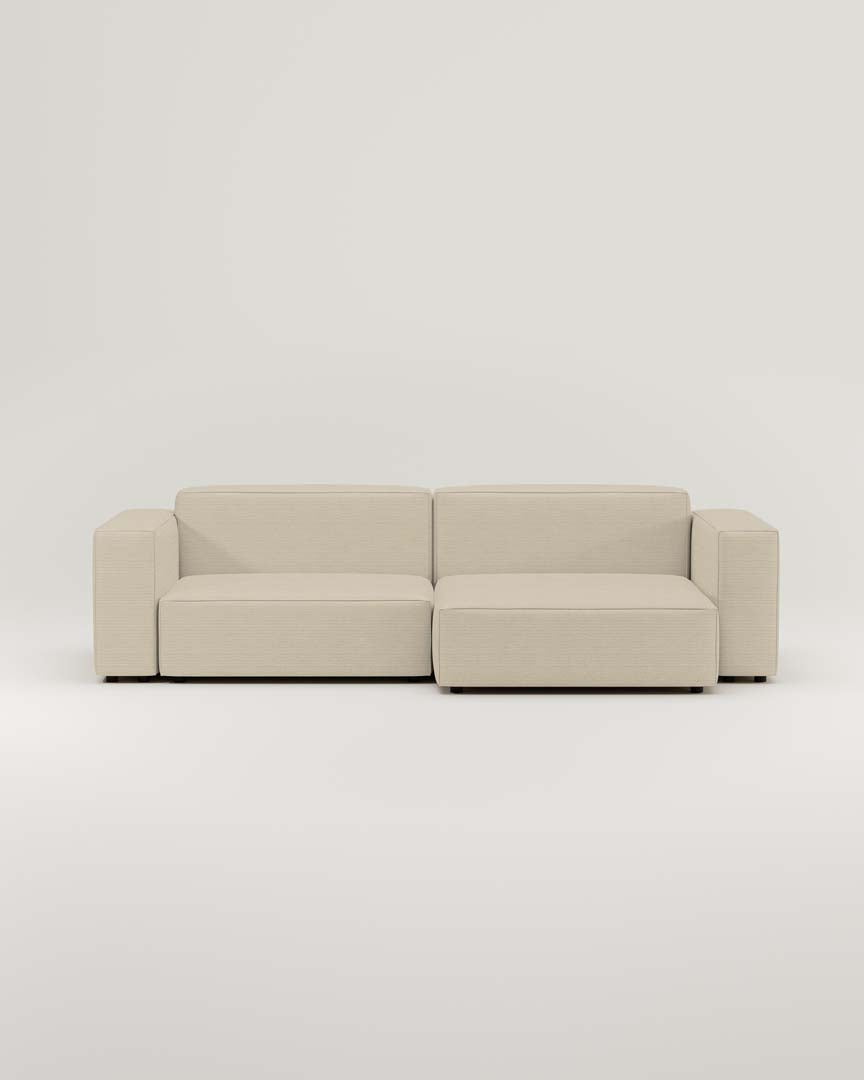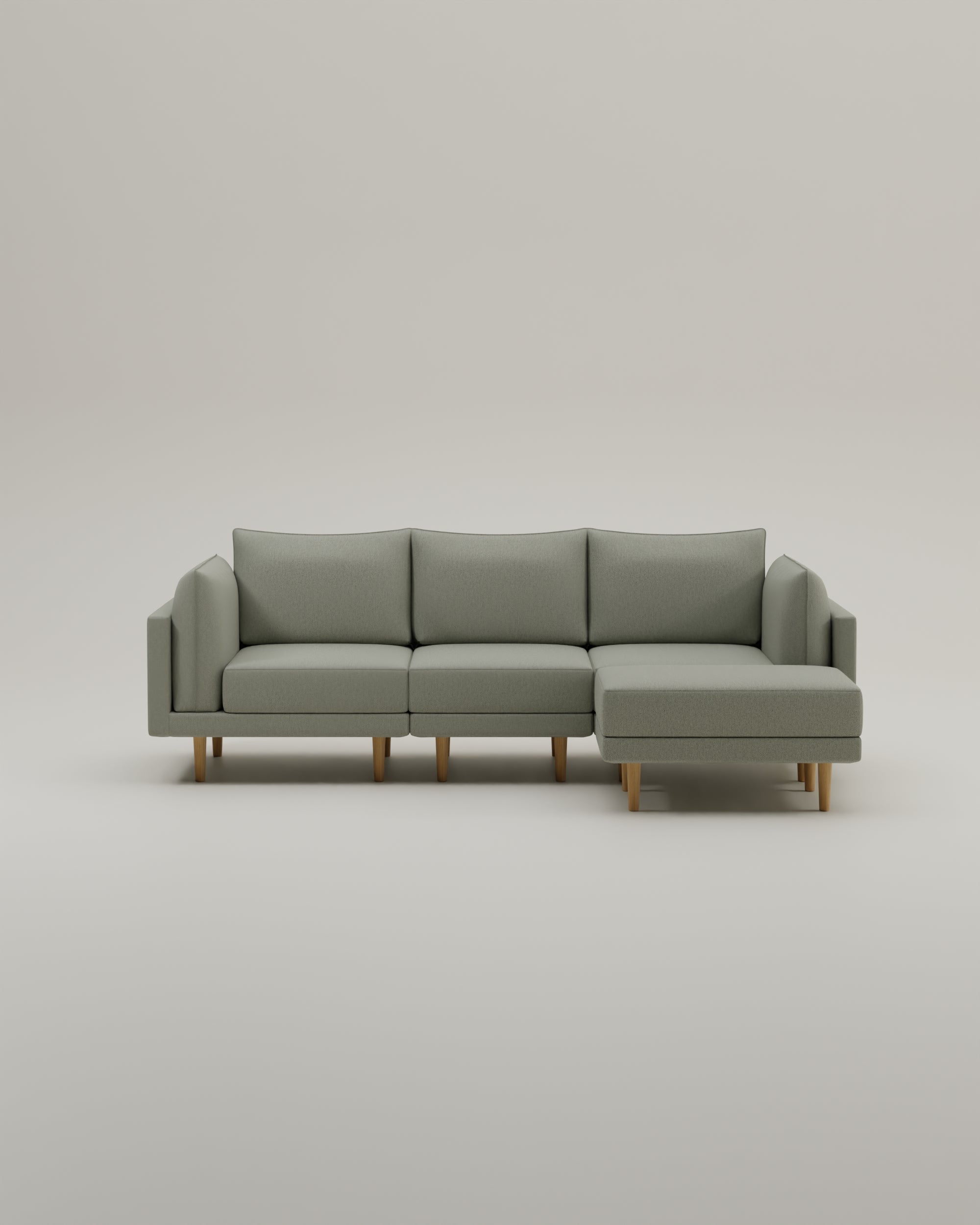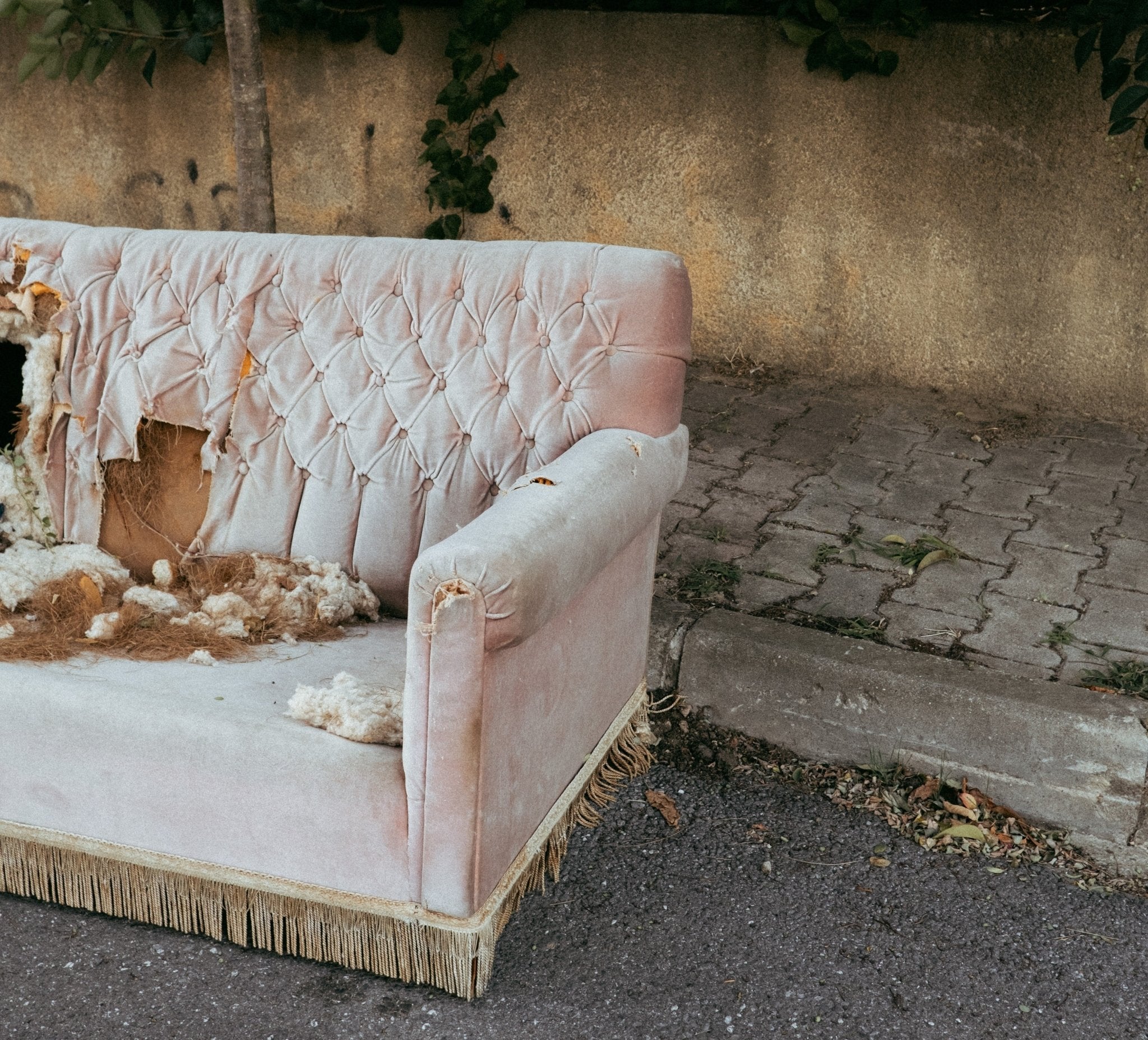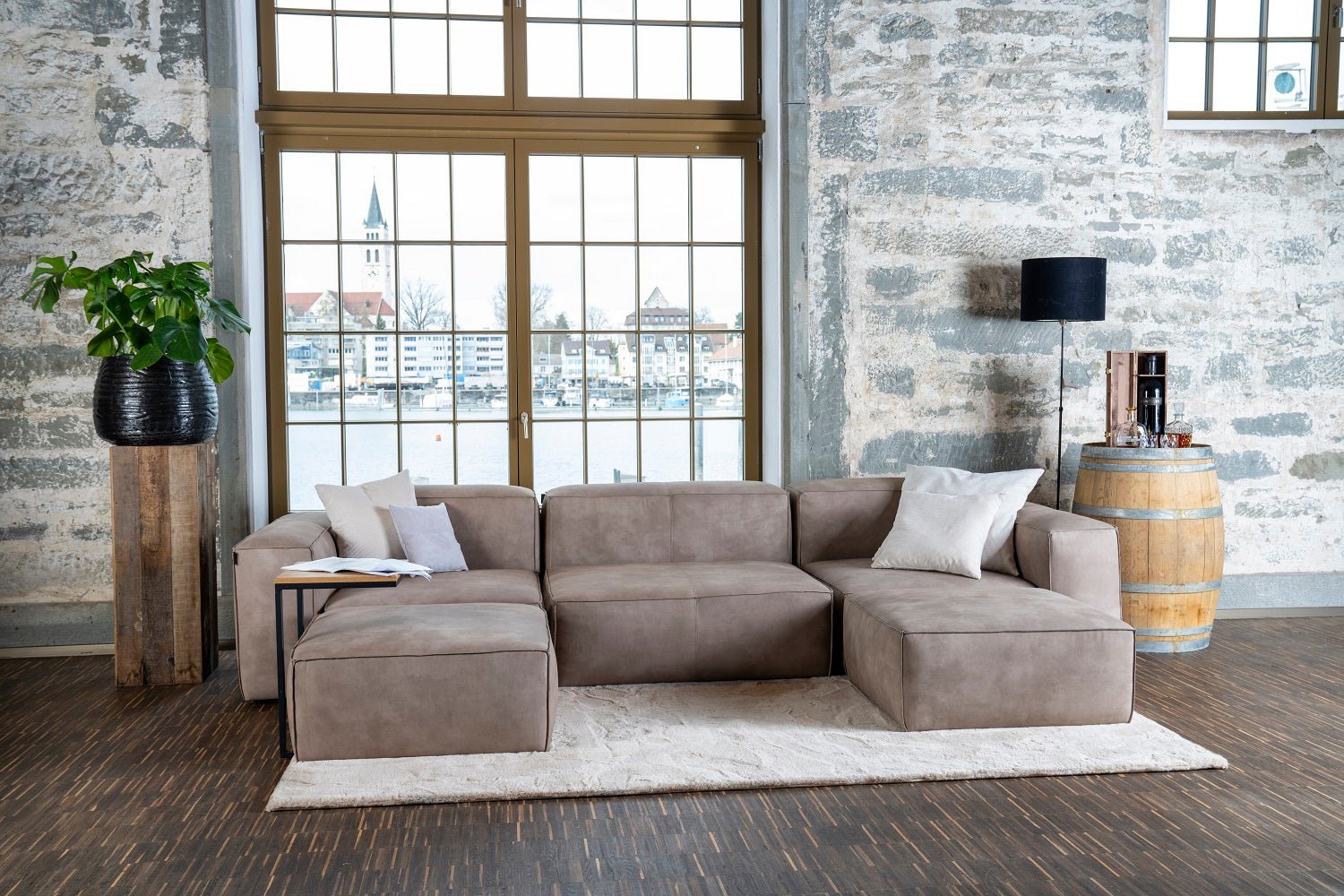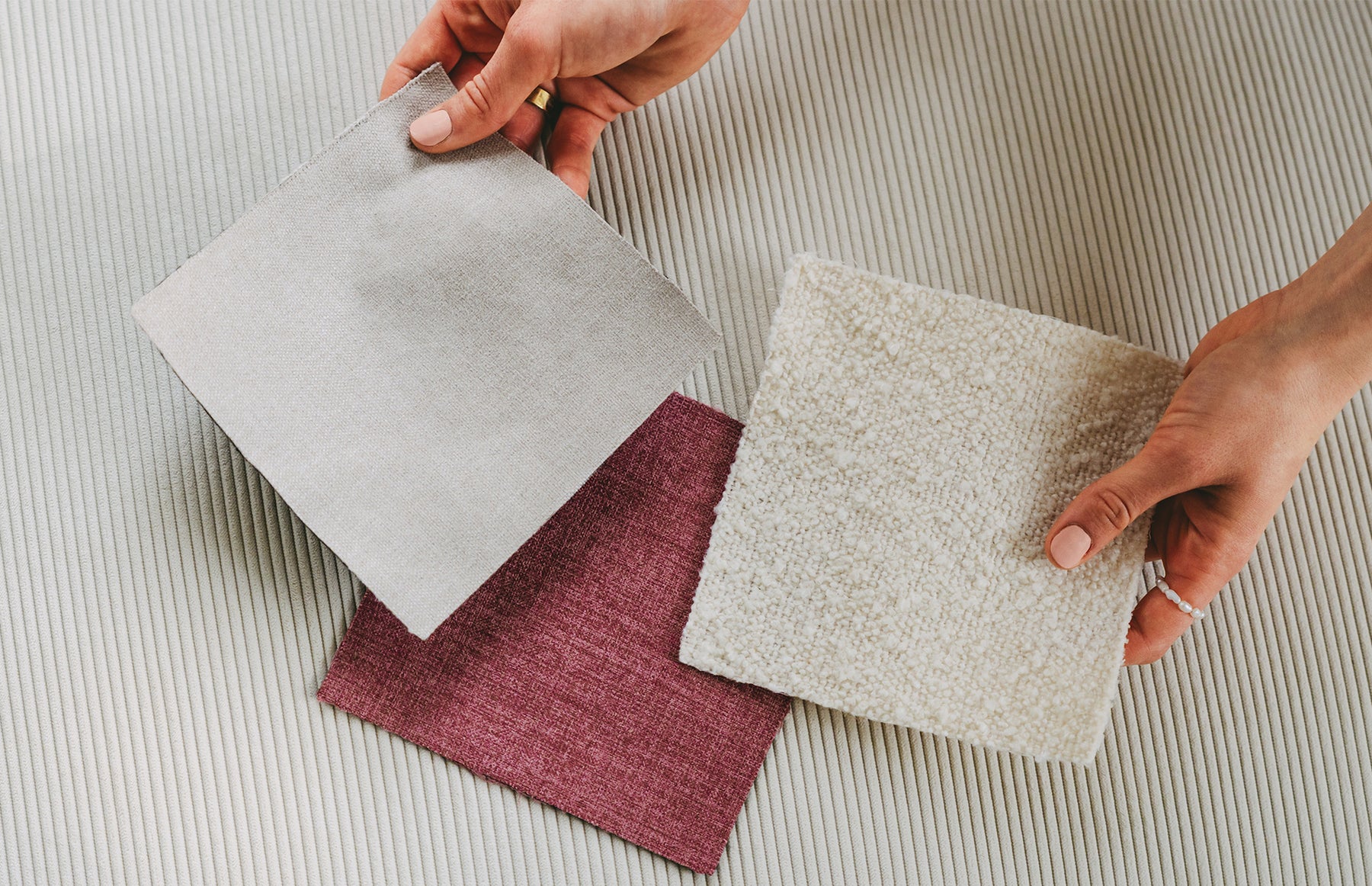The living room is the center of every home. It is the place where we relax, receive guests and spend time with our family. But how can we make our living room even more comfortable and inviting? One possibility is the integration of houseplants. In this article we present the 10 best plants for the living room and give tips on choosing and care.
Why plants in the living room are important
Plants are not only aesthetically appealing, they also have numerous health benefits. Housing plants can improve the air by Pollutants Filter and produce oxygen. They create a natural and calming atmosphere that can reduce stress. In addition, plants can act as a natural humidifier and thus make the indoor climate more pleasant.
However, plants in the living room can look even more than just good. You can also have a positive effect on our health. A study from 2019 has shown that the presence of plants indoors can increase concentration and productivity. The researchers found that participants who worked with plants in a room showed better cognitive performance than those who worked in a room without plants.
Health advantages of houseplants
Houset plants have been shown to have positive effects on our health. They can reduce allergens and pollutants in the air and thus prevent allergies and respiratory diseases. They also improve concentration and productivity. Studies have shown that the presence of plants in a room can lead to better cognitive performance.
Another health advantage of houseplants is their ability to increase humidity. Dry room air can lead to dry skin, irritated eyes and respiratory problems. By placing plants in your living room, you can make the indoor climate more pleasant and avoid these problems.
Improvement of room air through plants
Housing plants can improve the air by Pollutants how formaldehyde and benzene filter from the air. These pollutants can be released from furniture, colors or cleaning agents and can cause health problems in the long term. Therefore it is extremely important to furniture or Sofas from sustainable and tested materials to buy. By placing plants in your living room, you can improve air quality and create a healthier indoor climate.
In addition to the filtering of Pollutants Also produce houseplants oxygen. During the photosynthesis process, plants absorb carbon dioxide and release oxygen. This can help to improve the air quality indoors and increase your general well -being.
There are many different types of houseplants that you can place in your living room. Some popular options are the green lily, the rubber tree and the arch. These plants are not only beautiful to look at, but also easy to care for and can therefore also be suitable for beginners. In addition, Farn and the rubber tree have a cooling effect in summer. You can find more tips for a cool living room here.
To get the best out of your houseplants, you should water them regularly and fertilize them. Make sure you get enough light, but avoid direct sunlight, as this can lead to burns of the leaves. With the right care, houseplants can thrive in your living room for many years and offer you the diverse health benefits that you can offer.
Discover our sustainable range:
Selection of the right plants for your living room
When choosing plants for your living room, you should take some factors into account.
A green living room creates a pleasant atmosphere and gives your home a natural touch. Housing plants are not only decorative, but also improve air quality by producing oxygen and filtering pollutants. However, choosing the right plants for your living room can be a challenge.
Consideration of light and temperature
Most houseplants need light, indirect light to thrive well. Therefore, prefer plants that can make do with little light if your living room is not particularly sunny. There are many plants that grow well in the shade, such as the Zamioculcas or the Arche Hanf. However, make sure that these plants also need some light to stay healthy.
In addition to the light, the temperature also plays an important role in choosing the right plants. Some plants prefer warmer conditions, while other colder climate prefer. If your living room is rather cool, cacti or succulents could be the right choice for you. They are adapted to dry and warm environments and do not need a lot of water.
Selection according to maintenance effort
The care intensity of a houseplant varies depending on the type. If you have little time to take care of your plants, choose robust plants that get by with minimal care. An example of this is the green lily, which also thrives in less ideal conditions and only needs occasional watering.
If you like to spend time with your plants and want to take care of them, you can also choose more demanding plants that require your attention. Orchids, for example, are beautiful plants, which, however, need special care. They have to be poured and fertilized regularly, and they prefer high humidity.
Another important factor when choosing the right plants for your living room is the available space. Miss the room you have for your plants and choose plants that fit into this room. It is also important to take into account the growth habits of the plants to ensure that they have enough space to spread out
Top 10 plants for your living room
Succulents: easy -care beauties
Succulents are the perfect choice if you are looking for easy -care plants. You only need a little water and get along with different lighting conditions. Succulents can be found in different shapes and colors and bring variety to your living room.
Did you know that succulent water saves in your leaves? This enables them to survive in dry environments in which other plants would fight. Some types of succulent even have thorny leaves to protect themselves from predators.
The variety of succulents is impressive. There are smaller species that fit perfectly on window sills and larger species that can serve as an eye -catcher on a table or chest of drawers. No matter which succulent you choose, you will give your living room a touch of beauty and elegance.

Ficus: A classic for the living room
The Ficus is a popular houseplant that can be found in many living rooms. It is robust, air purifying and needs little light. The Ficus can become an eye -catcher in your living room and at the same time improve the room air.
There are different types of Ficus plants, including Ficus Benjamina, Ficus Elastica and the Ficus Lyrata. Each of these species has its own unique features and can give your living room a special atmosphere.
For example, Ficus Benjamina has delicate, green leaves that bring a touch of freshness into the room. The Ficus Elastica, also known as rubber tree, has shiny, dark green leaves that create an elegant look. The Ficus Lyrata, also known as violin figs, has large, fierly shaped leaves that set a dramatic accent.
Orchids: exotic elegance
Orchids are known for their exotic beauty and elegance. They bloom in different colors and can turn your living room into a tropical oasis. Orchids need a little more attention, but the effort is worthwhile for your breathtaking blossoms.
There are thousands of orchid species in the world, many of which are native to tropical regions. Each kind has its own specific requirements for light, temperature and humidity. If you choose orchids, it is important to understand the needs of the way you chose to ensure that you thrive in your living room.
Orchids are also known for their long flowering. Some species can bloom for several months, while others only bloom for a few weeks. No matter which orchid species you choose, you will give your living room an exotic note and become a topic for your guests.

Monstera: The trendsetter under the houseplants
The Monstera is a houseplant that is currently very popular. It has large, decorative leaves that contribute to a trendy look in your living room. The Monstera needs light, indirect light and regular watering.
The characteristic holes in the leaves of the Monstera make them a unique houseplant. These holes, also called windows, serve to give the leaves more light and at the same time give them an interesting structure. The Monstera is a climbing plant that can grow up on a moss rod or on a wall.
The Monstera is also known as "Swiss Cheese Plant" due to the similarity of its leaves with the appearance of Swiss cheese. With its trendy look and its appealing design, the Monstera is the perfect choice to give your living room a modern touch.

Philodendron: The easy -care climbing plant
Philodendrons are climbing plants that are well suited for living rooms. You need little light and can grow on shelves or walls. Philodendrons are easy to care for and can also delight beginners to integrate plants into their home.
There are many different types of philodisers, each of which has their own unique characteristics. Some types of philodendron have heart-shaped leaves, while other elongated or lobed leaves have. The Color The leaves also varies, from deep green to bright yellow.
Philodendrons are also known for their air purifying properties. You can filter pollutants from the air and thus improve the air quality in your living room. With their simple care and their attractive appearance, Philodendren are a great choice for everyone who is looking for a climbing plant to beautify their living room.
Sansevieria: The indestructible desert plant
The Sansevieria, also known as an arch or mother -in -law tongue, is an extremely resistant plant. It can survive with little light and water and is therefore perfect for living room that does not offer much natural brightness. The Sansevieria has long, upright leaves and is a good choice to bring green to its living room.
The Sansevieria is a succulent and stores water in its leaves, which helps her to survive dry periods. This plant is also known for its air purifying properties. It can filter pollutants such as formaldehyde and benzene from the air and thus improve the air quality in your living room.
There are different types of Sansevieria, some with striped or spotted leaves. Thanks to its robust nature and interesting appearance, it is a great choice for everyone who is looking for an easy -care plant to give your living room a natural touch.

Aloe Vera: The medicinal plant for the living room
The aloe vera is not only a beautiful houseplant, but also a medicinal plant. The gel from its leaves has anti -inflammatory and soothing properties and can be used for skin injuries or sunburn. It needs bright light, but direct sunlight should be avoided.
As succulent, the aloe vera stores water in its fleshy leaves, which helps her to survive in dry environments. It has long, pointed leaves and can grow to an impressive size.
To win the gel out of the leaves, you simply cut off a sheet and press out the gel. This can then be applied directly to the skin to use its healing properties. With its double function as a houseplant and medicinal plant, Aloe Vera is a great addition to the living room.

Efeutute: The ideal hanging plant
The ivy is a popular hanging plant for the living room. It has long tendrils that can grow down from hanging baskets or shelves. It needs bright, indirect light and regular watering and is perfect for filling empty corners or high shelves in the living room.
The ivy is a robust plant and can thrive in various environments. It is also known for its air purifying properties and can filter pollutants from the air. It has heart -shaped leaves that are available in different shades of green.
Efeututen are also easy to multiply. You can cut cuttings from the plant and let root into water or earth. So you can multiply your efeutute and receive other plants for the living room or to give away.
Care tips for your living room plants
The living room is a popular place to place houseplants. They not only give the room a pleasant atmosphere, but also improve air quality. So that your living room plants stay healthy and beautiful, it is important to maintain them properly. Here are some tips that will help you:
Irrigation and fertilization
Most houseplants need regular watering to survive. However, it is important to consider the right time and the right amount of water. Check the moisture of the soil regularly by putting your finger into the earth about one centimeter deep. When the top layer is dry, it is time to pour your plants. However, avoid drowning them because this can lead to root rot.
In addition to irrigation, fertilization is also important to supply your plants with the necessary nutrients. Use a balanced fertilizer that contains all important nutrients. The frequency of fertilization depends on the type of plant and the season. In general, you should fertilize your houseplants every two weeks during the growth phase. In winter, when plant growth is slower, you can reduce the fertilization at once a month.
Repott and cut
Housing plants grow over time and therefore occasionally need a larger pot to make room for their root growth. Watch the growth of your plants and regularly check the roots. If you find that the roots fill out the existing room and protrude from the pot, it is time to overturn the plant. Choose a pot that is at least 2-3 cm larger than the old pot and use fresh potting soil.
In addition to repotting, regular cutting of your houseplants is important to promote growth and health. Remove dead leaves or drives to make room for new growth. Also cut off excessively long shoots to promote bushy and compact growth. Always use a clean and sharp tool to avoid injuries to the plant.
By following these care tips, you can make sure that your living room plants stay healthy and beautiful. Don't forget to check your plants regularly and pay attention to possible pests or diseases. With a little attention and care, your houseplants become a real eye -catcher in your living room.
Common problems and solutions in houseplants
Pest infestation and diseases
Sometimes your houseplants can be affected by pests such as aphids, spider mites or mosquitoes. Check your plants regularly on signs of infestation and take action to get rid of the pests. Diseases such as mold or fungal attack can be caused by excessive watering. So make sure that the floor is not too moist.
It is important that you regularly inspect your houseplants and pay attention to possible pests. Leaf lice are small insects that feed on the plant juices and weaken the leaves. Spider mites are tiny, spider -like beings that weave fine threads and suck the plant leaves. Mourning mosquitoes are small flies that lay their eggs in the ground and whose larvae can eat the roots of the plants.
To get rid of pests, you can use different methods. One possibility is the use of insecticides that have been specially developed for houseplants. These can be available in the form of sprays or granules. Another option is to use natural pesticides such as neem oil or a mixture of water and detergent. These can be sprayed on the plants to kill the pests.
In order to avoid diseases such as mold or fungal attack, it is important that you pour your houseplants correctly. Make sure that the soil does not become too moist, since excess water can favor the formation of mold. It is also advisable to ventilate the plants regularly to reduce the humidity and reduce the likelihood of fungal attack.
Solutions for yellow leaves and growth problems
Yellow leaves can be a sign of excessive watering or a lack of nutrients. Reduce the amount of water and check the nutrient content of the soil. If your plants do not grow properly or their leaves are withered, you may be able to get too much or too little light. Change the position of your plants to meet the optimal light requirement.
It is important that houseplants receive sufficient light to grow healthy. Most houseplants prefer light, indirect light that falls through a window or a door. If your plants do not receive enough light, your leaves can be yellow and growth can be impaired. In this case, you can use an artificial light source like a plant lamp to cover the light requirement of your plants.
Another possible reason for yellow leaves and growth problems can be a lack of nutrients. House plants need certain nutrients such as nitrogen, phosphorus and potassium to grow healthy. Check the nutrient content of the soil and, if necessary, add it with a suitable fertilizer. However, make sure not to use the fertilizer excessively because this can lead to over -fertilization.
With the right plants and the right care, you can turn your living room into a green oasis. Choose plants that meet your personal taste and give your living room the desired atmosphere. I enjoy watching your plants and further developing your green thumb skills!
There is a large variety of houseplants from which you can choose. Some popular houseplants are the green lily, which is characterized by its long, green leaves, and the rubber tree, the large, shiny leaves. The Zamioculcas is another popular houseplant that requires little light and water and is therefore ideal for beginners.
It is important that you regularly maintain your houseplants to ensure that they stay healthy. This includes regular watering, removing dead leaves and repotting when the plant becomes too large for its current pot. Also make sure that your houseplants are not near drafts or radiators, as this can lead to drought.
Maintaining houseplants can also be a relaxing and stress -reducing activity. Watching the growth of your plants and maintaining your needs can give you a feeling of fulfillment. It can also help improve air quality in your living room, as plants absorb carbon dioxide and hand over oxygen.
